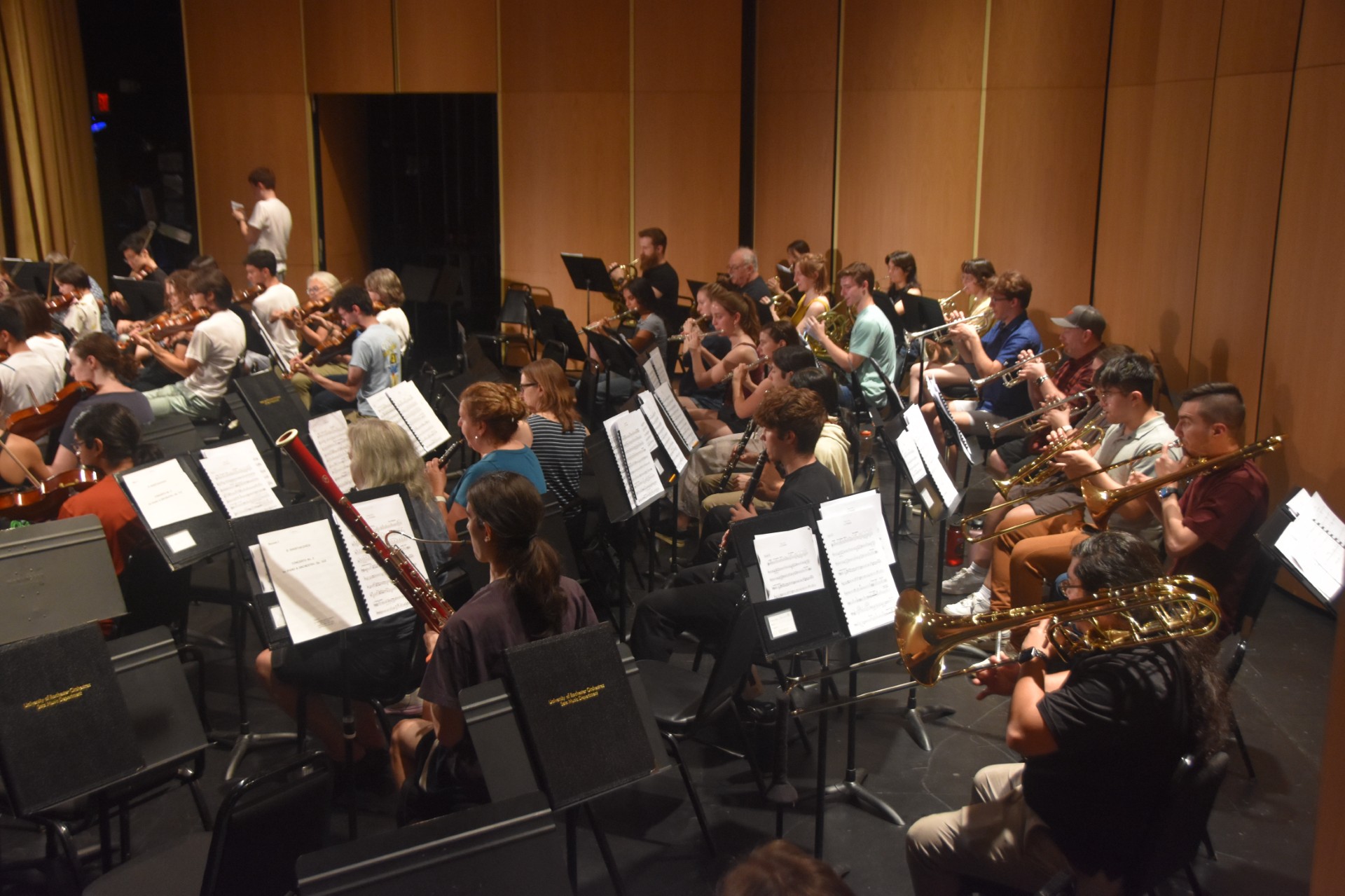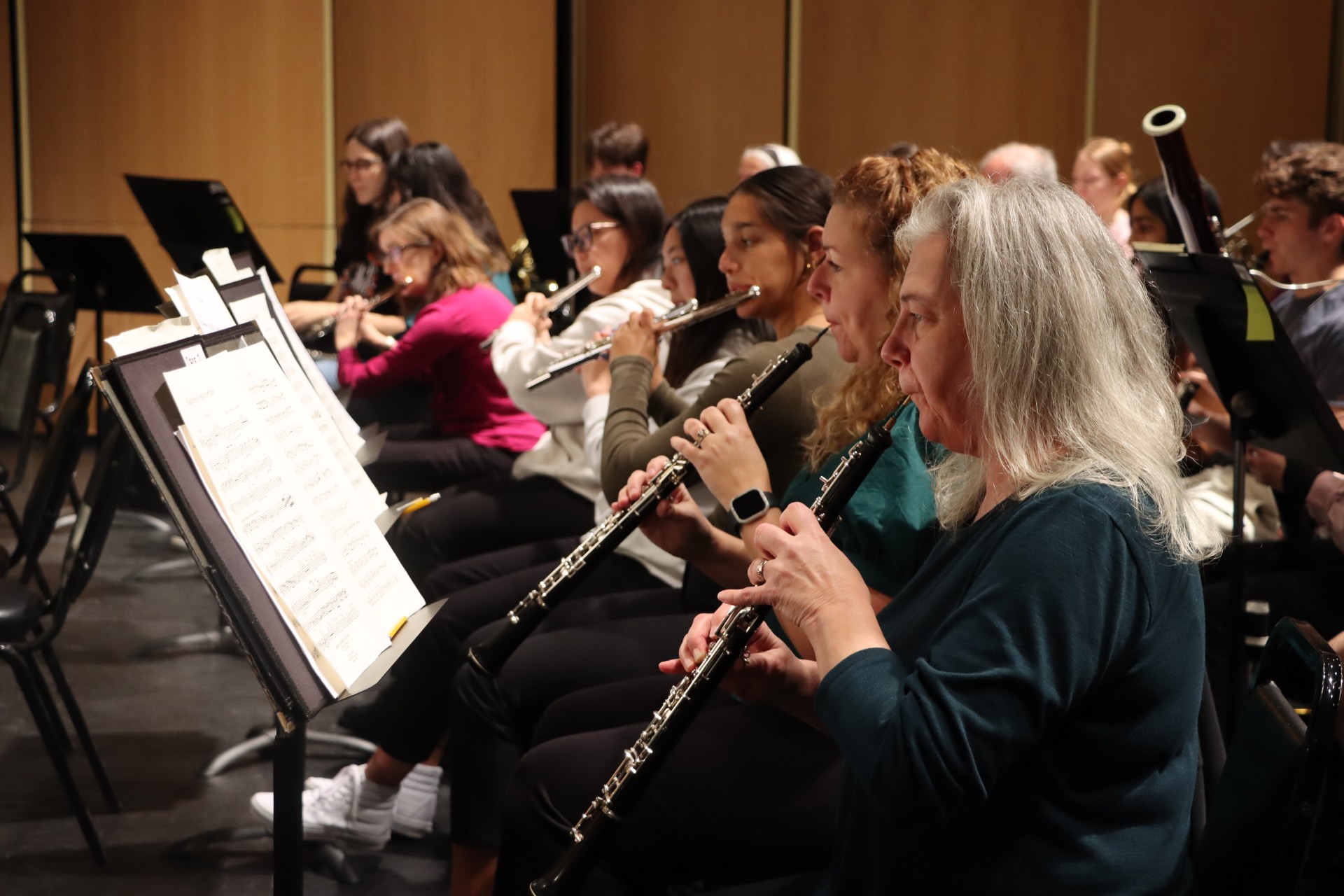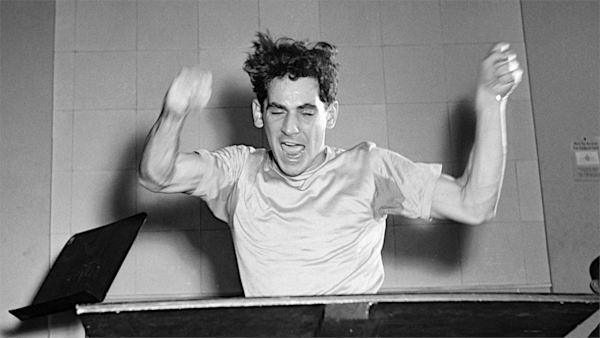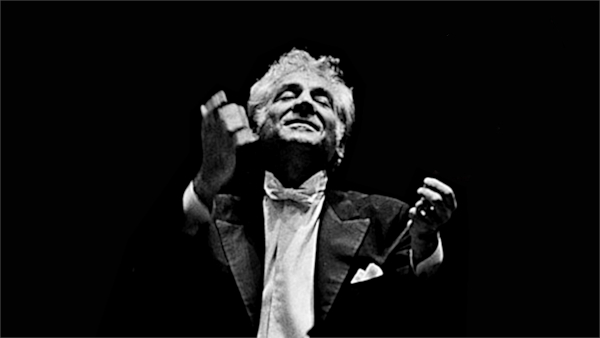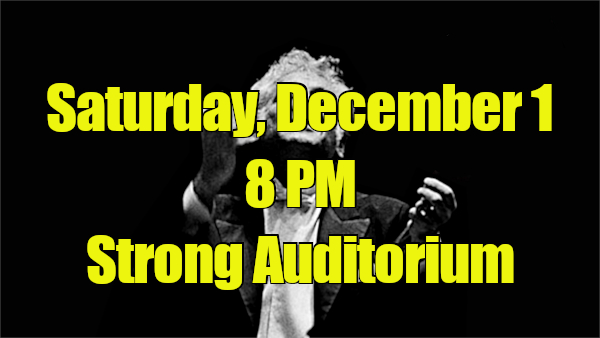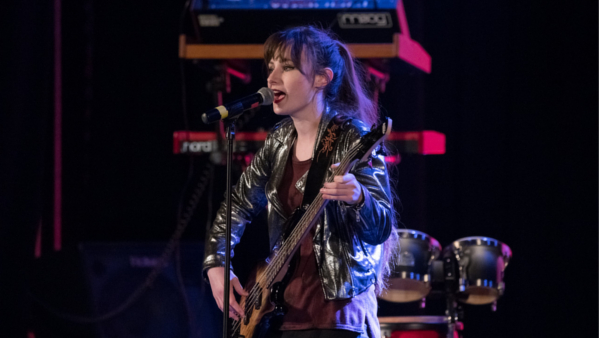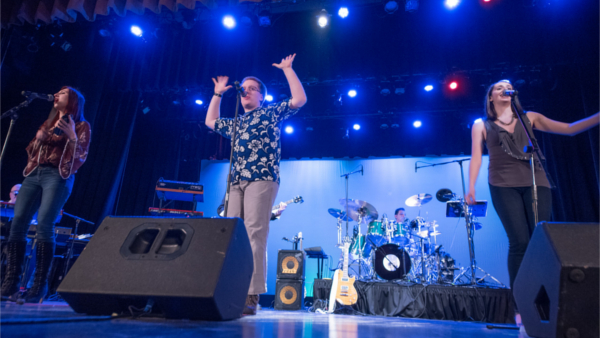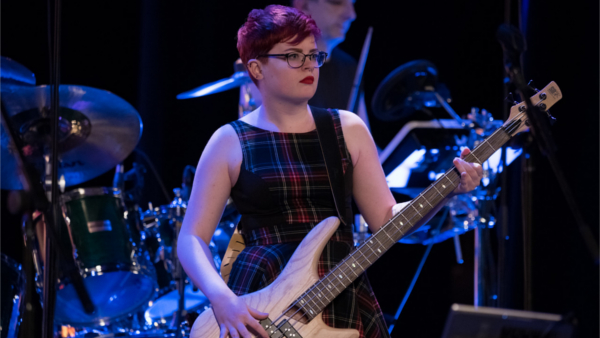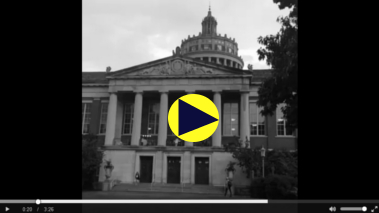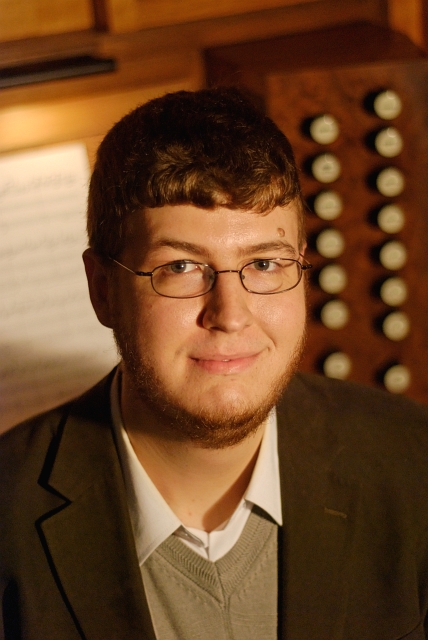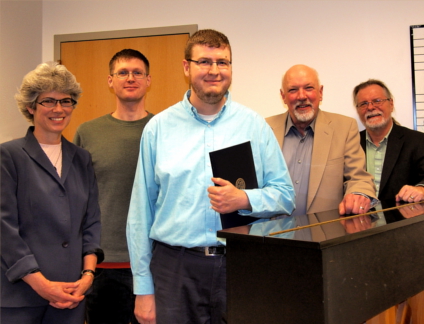Department News
2025 - 2026 Concerto Competition Notice
The UR Orchestra’s Annual Concerto Competition will take place on Thursday, December 4, 2025 in Strong Auditorium at 7:30 p.m.
For complete details, please review this document.
Congratulations to the Class of 2025!
The Arthur Satz Department of Music is proud to celebrate the Class of 2025! The department graduation ceremony was held on Saturday, May 17, 2025 at 9 AM in the Sloan Performing Arts Center. The graduation program is available for digital viewing. The department wishes each of its graduates the warmest congratulations and best of luck in your next chapter! We can't wait to hear about your adventures! Stay musical!
In Conversation with Rick Beato and Anthony Fantano
The Arthur Satz Department of Music is thrilled to welcome YouTube sensations Rick Beato and Anthony Fantano to the River Campus on April 24, 2025, at 7 PM in Strong Auditorium for a panel discussion with guest moderator Dr. Skye Paine. This event is free and open to the public.
Rick Beato is an American musician, educator and YouTube personality and currently has nearly 5 million subscribers on the platform. The videos on his “Everything Music” channel regularly receive over a million views and have had over 500 million views in total. He has worked as a musician, college professor, songwriter, and record producer. In his work on YouTube he has interviewed Sting, Pat Metheny, Brian May, Eric Johnson, Ron Carter, Victor Wooten, John Scofield, Larry Carlton, Vinnie Colaiuta, Bernard Purdie, and Peter Frampton among others.
Anthony Fantano is best known as “the internet’s busiest music nerd,” but he is much more than that. The New York Times declared him “The Only Music Critic Who Matters (if You’re Under 25).” For over 15 years his channel—The Needle Drop—has been a leading voice on YouTube with over a billion views and more than 3 million subscribers who tune in to his daily uploads. Despite this influence, Anthony has remained steadfastly independent, and has become a primary model for intelligent, thought-provoking music criticism on YouTube.
Dr. Skye Paine lives a double life as both an associate professor of French at SUNY Brockport and as a music critic on YouTube under the apt moniker of “Professor Skye.” He has had his channel since 2018 where he delivers deeply analytical video essays on newly released music while making unexpected connections drawing from his academic background. Although he obtained his doctorate in 17th Century French Literature from UC Santa Barbara, he now focuses his research primarily on American and International Rap music. He is also the coordinator of the new “Hip-Hop Minor” at SUNY Brockport.
This event is part of the Rochester Area College Music New Media Speaker Series, a collaboration between University of Rochester and SUNY Brockport.
Parking is free and open to the public in many campus lots after 5 PM. This campus map will assist with finding a place to park and navigating to Strong Auditorium.
Taylor, Dylan, and the Art of Songwriting
April 20, 2024, 2-5 PM, Dewey Hall, Room 1.101
This symposium will feature talks about Taylor Swift, Bob Dylan, and the art of songwriting. Stephanie Burt, an acclaimed poet and scholar from Harvard University, will discuss the music and lyrics of Taylor Swift. Steven Rings, a music theorist from University of Chicago, will discuss the lyrics of Bob Dylan. And Victoria Malawey, a music theorist from Macalester College, will discuss her experience teaching songwriting.
Steven Rings, University of Chicago | “Dylan’s Bridges Revisited”
Bob Dylan is perhaps best known for his songs in verse-refrain form. Think of the many tunes with long, florid verses that end with a refrain line; “Desolation Row” and “Tangled Up in Blue” are two famous examples. But a significant number of his songs follow different formal outlines, among them 12-bar blues, verse-chorus, and 32-bar song form. In today’s talk, I’m most interested in those songs that include a bridge. My emphasis will be on the bridge’s lyrics, in keeping with this conference’s theme, but I’ll also talk a bit about music. My motivating questions: What role do bridges play in Dylan’s songs? What does the presence or absence of a bridge say about genre? How does Dylan mark a bridge lyrically, in terms of changes in prosody, subject matter, tone, or literary register? And how do these lyrical shifts relate to musical shifts that mark the bridge, especially as regards harmony, melody, and harmonic rhythm? I will argue that Dylan’s bridges sometimes open new interior spaces within a lyric, like an affective hidden chamber; at other times, they mark a registral downshift into the colloquial or mundane; in still others, they are spaces of play and concentrated wit. We will explore bridges in “Ballad of a Thin Man” (1965, his first song to include one), “Just Like a Woman” (1966), “Sign on the Window” (1970), “You’re Gonna Make Me Lonesome When You Go” (1974), “Dignity” (1989), and “Moonlight” (2001).
Victoria Malawey, Macalester College | "Regret Is the Thing We Should Fear Most: An Exploration of Songwriting Pedagogy"
This presentation explores songwriting pedagogy with a special focus on fostering creativity in student’s lives. Drawing upon anecdotal evidence and research on vulnerability, perfectionism, and shame, I argue the most important step in facilitating creativity in academic environments is to create a safer space for vulnerability and failure. Strategies for creating an optimal environment for creative growth include emphasizing daily creative practice over earning grades, focusing on process rather than performance, and using scaffolded, multi-part assignments rather than single-iteration assignments. This talk will also provide a sample structure for putting together a songwriting course, based on experiences teaching undergraduates at a small liberal arts college, with a focus on writing song lyrics. This presentation offers an ongoing two-week rotation format in which students create, share, and critique a sketch of a new song based on a prompt in the first week and then revise the sketch before sharing a completed version of the song in the second week, repeating the cycle every two weeks upon a new prompt. We further explore specific exercises and resources focused on song lyric writing, including object writing (Pattison 2009), external and internal language (Stolpe 2007), poetic meter (Bell 2019), and strategies for storytelling and generating new ideas, such as freewriting, “who” writing (Pattison 2011), destination writing (Stolpe 2007), and more. The presentation concludes with methods for adapting songwriting pedagogy into courses designed for different kinds of degree programs, as well as non-songwriting courses.
Stephanie Burt, Harvard University | “What Makes Taylor Swift So Popular?”
Why and how did Taylor Swift take over the world? What makes her and her music so popular? Monocausal explanations for complex phenomena always fail, and this talk won't provide one. Instead, we'll look at what makes Taylor special in several dimensions, addressing the partial, necessary-but-not-sufficient nonmusical explanations-- her business sense, her social media savvy, her economic, racial and geographic privilege-- in order to spend more time with the musical ones. What does she do with the same dang four and a half chords that everyone seems to use to make her words and her melodies special? How does she change when her collaborators do, and when she eschews collaboration? How do her words and her melodies meet her fans where we are, and take us-- so many of us-- where we want to be? And how-- through her evolution from anxious teen to workaholic superstar, from adorable youth to the world's Miss Americana-- has she kept the word-based parts of her songwriting so powerful and so fresh? One answer: she knows how to remain both biographical-- telling specific stories about imagined characters, including herself-- and accessible, making those stories ones where we might see ourselves. Another: she's managed to be, from her debut forward, both aspirational and relatable. The people in Taylor's songs often share our problems, from high school rejection to midnight anxiety. At the same time they are people we might want to be, or might rather be, from girls whom guys notice to jet-propelled spotlight lovers. That's how she writes—and it's how she's stayed close to her fans, not only as a media personality, but, more important, as the great songwriter she remains.
Congratulations to the Class of 2023!
The Arthur Satz Department of Music is proud to celebrate the Class of 2023! The department graduation ceremony was held on Saturday, May 13, 2023 at 9 AM in the Sloan Performing Arts Center. The graduation program is available for digital viewing along with our Class of 2023 slideshow. The department wishes each of its graduates the warmest congratulations and best of luck in your next chapter! We can't wait to hear about your adventures! Stay musical!
Check out our slide show, graduation program and video of our ceremony.
Dancing about immigration . . . Cole Porter's Within the Quota
Going out with a bang . . .
Dr. David Harman in "Newscenter"
See this great profile on Dr. Harman for UR's Newscenter:
David Harman: A legacy of teaching music
David Harman Fund for Orchestral Excellence
The David Harman Fund for Orchestral Excellence will be established in recognition of his extraordinary tenure as Director of Orchestral Activities at the University of Rochester, and in gratitude for his exemplary contribution to musical life on campus and in the community. The fund will support the activities of the College Music Department's orchestras at the discretion of the Director of Orchestral Activities in the Department of Music. There will be a special concert held at Kodak Hall in the Eastman Theatre on Thursday Arril 13, 2017 at 6:30 in honor of Dr. Harman. The concert will feature the Symphony Orchestra, with a special appearance by the Chamber Orchestra.
If you would like to donate, download this pdf or visit http://www.rochester.edu/advancement/and click ‘Make A Gift’ or call Gift & Donor Records at (585) 275-8602.
2016/2017 Concerto Competition Winners
The judges have spoken. The results are in from the 2016/2017 Concerto Competition held in Strong on November 2, 2016. Winners will perform with URSO or URCO, and are as follows:
- Khang Huynh, violin, performing Bruch's Violin Concerto Movement 2, with the Symphony Orchestra, Saturday, February 26, 2017
- Yuhe Wang, piano, performing Beethoven's Piano Concerto No. 2, Movement 1, with the Chamber Orchestra, Saturday, March 4, 2017
- Sabrina Goyal, piano, performing Mozart's C Minor Piano Concerto, Movement 1, with the Chamber Orchestra, Saturday, April 29, 2017
Congratulations!
Humanities Project: Liszt & Virtuosity - An International Symposium
March 02, 2017 - March 04, 2017
The conference program will feature ten of the world's most prominent Liszt scholars, including Alan Walker, author of the landmark three-volume biography of Liszt, as well as an all-Liszt concert by Eastman School of Music piano students.
Click here for the complete event program
Click here for the recital program
"Fanfare for the Common Man" greets the Class of 2020 and returning students
Wednesday, August 31, 2016, Dr. Honey Meconi led an all-female ensemble of students, alumni and faculty in the performance of Aaron Copeland's iconic and haunting "Fanfare for the Common Man." The ensemble performed the piece at 8:30 AM, from the balcony of Rush Rhees Library, over looking the Eastman Quadrangle. Dr. Meconi hopes to make this an annual event. For photos by UR photographer J. Adam Fenster, click here.
West African Drumming & Musical Theater Workshop Promo Videos
The UR Institute for Performing Arts released two videos featuring the West African Drumming Ensemble, featuring Kerfala "Fana" Bangoura, and the Musical Theater Workshop, featuring Dr. Kim Kowalke and Mr. David Runzo. The videos, produced for IPA by IT Communications, were premiered on the Institute's Youtube channel.
Brian Alegant named 2015 U.S. Professor of the Year
Congratulations to Brian Alegant, Professor of Music Theory at Oberlin College and recipient of a 2015 U. S. Professor of the Year Award. Professor Alegant taught in the College Music Department in 1989–1990 and we are pleased to have provided one of his earliest teaching opportunities.
Recent Department alumnus to join "The Fantasticks"
Andrew Polec (Class of 2012) has been cast in the role of "Matt" in the Off-Broadway production of The Fantasticks at the Snapple Theatre, located on the corner of 50th Street and Broadway in New York City. Andrew says he is "incredibly excited and . . will start performing in the show on February 8th!" Congratulations!
2015/2016 Concerto Competition Winners
The judges have spoken. The results are in from the 2015/2016 Concerto Competition held in Strong on November 4, 2015. Winners will perform with URSO or URCO, and are as follows:
- Zhenzhi Xia, piano, performing Beethoven's Piano Concerto No. 1, Movement 1, with the Symphony Orchestra, Saturday, February 27, 2016
- Di Wang, piano, performing Bach's Keyboard Concerto in D Minor, Movement 1, with the Chamber Orchestra, Saturday, February 20, 2016
- Stan Chen, violin, performing Bruch's Violin Concerto, Movements 1 and 2, with the Symphony Orchestra, Saturday, April 16, 2016
- Chantelle Lim, violin, performing Mendelssohn's Violin Concerto, Movement 3, with the Chamber Orchestra, Tuesday, April 19, 2016
Congratulations!
Teaching Assistant Wins Award
The University Dean of Graduate Students has recognized Aaron James with the 2015 Edward Peck Curtis Award for Excellence in Teaching by a Graduate Student. This is a competitive award, and, as Dean of Graduate Students Margaret H. Kearney indicated, “the materials submitted on (Mr. James’) behalf clearly demonstrated (his) skill and commitment to the role.” This is the second year in a row that the Music Department has nominated a winning candidate. The award includes a monetary prize of $1000.
As teaching assistant for MUR 223, History of Western Music 1750-1850, Prof. Kim Kowalke noted that , “Aaron was an exemplary TA, one of the best I’ve ever had, and that is a select group indeed, with a half dozen winning the Edward Peck Curtis Award during the last three decades. Aaron deserves to be in that elite company . . “
Aaron James completed an MM in organ performance at Eastman following a BMus at the University of Western Ontario, where he received the Faculty of Music Gold Medal; he is now pursuing a PhD in musicology concurrently with a DMA in organ. His primary research interests involve issues of genre, theology and devotional culture in the sixteenth-century motet. He has presented conference papers at McGill University and the University of Sheffield (UK), and will present his work at the 2014 annual meeting of the Renaissance Society of America. His article on polyphonic settings of the Salve Regina was published in the spring 2014 issue of the Journal of the Alamire Foundation.
New Hopeman Carillon Video Created by Students
Created by Kara Morse, Sara Macnally and Jackie Meyer
2013 Hopeman Memorial Carillon Recital Series
The Hopeman Memorial Carillon Recital Series at the University of Rochester, a summer celebration of an iconic landmark’s 40th anniversary on the River Campus, will begin on Monday, July 8.
The free outdoor concerts on the Eastman Quadrangle are open the public and will take place Mondays in July. Each program will begin at 7 p.m., rain or shine, and last about an hour. Concert-goers are encouraged to bring folding chairs, blankets, and picnics, and settle on the lawn on the west side of Rush Rhees Library.
Visiting performers will play programs that include selections of American classics and lullabies, songs from Broadway musicals, as well as compositions written specifically for the carillon. Following the concerts, attendees are invited to meet each performer on the library steps. “The setting is beautiful and serene so the audience can enjoy the concert without a lot of distractions,” said Tim Sleep, teacher at the Millenium Carillon in Naperville, Ill. Sleep, who has performed on the University’s Hopeman Memorial Carillon before, will travel this summer to several cities, including Rochester. “Each carillon is unique and I really enjoy getting to know the instrument and putting it through its paces.”
This year marks the 40th anniversary of the installation of the Hopeman Memorial Carillon. The majestic instrument is housed in the upper-most chamber at the top of Rush Rhees tower, and consists of 50 bells that were cast in bronze by Royal Eijsbouts Bellfoundry of Asten in the Netherlands. Throughout the year, the sounds of the carillon can be heard on campus as the traditional melody known as “Westminster Quarters” marks every quarter hour. One of only seven carillons in New York, the almost seven-ton instrument is regularly played by students of the University’s Carillon Society, who perform classic and modern musical compositions for campus events, holidays, and special impromptu concerts. The ringing of the carillon bells also marks special community, state, and national events.
Performer schedule:
- Monday, July 8
Carol Jickling Lens, instructor at the North American Carillon School and chair of the Nomination Committee of the Guild of Carillonneurs in North America. - Monday, July 15
Sally Harwood, assistant carillonneur at Beaumont Tower at Michigan State University. - Monday, July 22
Tim Sleep, teacher and performer on the Millennium Carillon in Naperville, Ill., and vice president of the Guild of Carillonneurs in North America. - Monday, July 29
Philippe Beullens, associate city carillonneur in Mechelen and Leuven and instructor at St. Martin’s College in Overijse, Belgium.
University of Rochester Brass Choir presents its 4th Annual Halloween Spooktacular
EVENT: UR Brass Choir Halloween Spooktacular Concert—Welcome to my Nightmare
DATE: Saturday, October 27, 2012
TIME: 8:00pm
LOCATION: Strong Auditorium, University of Rochester River Campus
ADMISSION: Free!
The University of Rochester’s Strong Auditorium will become a phantasmal dreamscape filled with joy, fear, strangeness, and death, as the UR Brass Choir takes the stage to present Welcome to my Nightmare, its 4th annual Spooktacular concert extravaganza on Saturday, October 27 th at 8:00pm. The 30-member performance group comprised of diverse members of the university community will present rock, metal, and pop music re-purposed for brass instruments, including works by Alice Cooper, Black Sabbath, Pink Floyd, and Amy Winehouse, among others. In keeping with tradition, this concert will also feature guest low brass musicians from the Rochester community in a supersized low brass ensemble performing “Big Bottom,” a song made famous in the movie This is Spinal Tap, and “War Pigs” by Black Sabbath. No fewer than four drummers and a host of other guest musicians will complete the roster of performers involved in this over-the-top show. Dramatic lighting, special effects, costumes, and interlude narration will add to the dream-like atmosphere in Strong Auditorium. Opening the show will be Chelsea Hans and Robert Hudson, talented jugglers who will set the scene for the nightmare to come…
The UR Brass Choir is celebrating its fifth year of existence under founder and director Josef Hanson. The ensemble has performed in a wide variety of venues, including Hendricks Chapel at Syracuse University and the Kennedy Center for the Performing Arts, and is dedicated to crafting performances that are a bit out of the ordinary, featuring everything from Renaissance music to fanfares to heavy metal.
The Spooktacular concert is free and open to the public, and no tickets are required. Parking is free in university lots all day on weekends. For more information, contact Josef Hanson at 585-273-5157 or josef.hanson@rochester.edu.
NOTE: This performance features strobe lighting and other special effects, and is not appropriate for very young children.
New Courses for Fall 2012
MUR 124: Signed, Sealed, & Delivered: Deals & Innovations that Changed the Record Industry Forever
2.0 credits, CRN #76922
Tuesdays 5:00-7:00pm, Todd Union room 202F
(course offered Sept. 4 - Oct. 9)
Bruce Pilato, instructor
No prerequisites
A look at the historical deals and innovations that have impacted the music business between 1877 to present. From ground breaking inventions to brilliant marketing initiatives to hushed back-room deals, this course will expose the key moments where the record industry changed forever, both for good and bad.
NOTE: This is a 6 week course
MUR 138: Introduction to Conducting
2.0 credits, CRN #78950
TR 12:30-1:30pm, Todd Union room 202F
Josef Hanson, instructor
Prerequisites: Ability to read music and proficiency on an instrument or voice (for participation in the small in-class ensemble)
This course is designed for students with little to no experience leading a musical ensemble. After mastering the basics of baton technique, beat patterns, preparations/releases, and cueing, students will gain hands-on experience leading a small ensemble comprised of fellow classmates playing instruments or singing. This course also addresses the joys and pitfalls of conducting choirs, jazz/popular music ensembles, pit orchestras, and a cappella groups. Each student will be given the opportunity to conduct a large instrumental ensemble as a “final exam.” Assignments will include short readings and research on various aspects of conducting, with the bulk of the course work taking place in class.
MUR 191: Art and Tech of Recording
4.0 credits, CRN #78187
MW 6:15-7:30pm, Computer Studies Building room 423
Stephen Roessner, instructor
No prerequisites
This course covers the acoustical and psychoacoustic fundamentals of audio recording including the nature of sound, sound pressure level, frequency and pitch, hearing and sound perception, reflection, absorption and diffusion of sound, sound diffraction, room acoustics, reverberation, and studio design principles. The course also provides practical experience in audio recording including an introduction to recording studio equipment, microphones and microphone placement techniques, signal flow, amplification, analog and digital recording, analog to digital conversion, digital processing of sound, multi-track recording and an introduction to mixing and mastering. Each student is required to complete a substantive recording project at the end of the course.
MUR 193: Computer Sound Design
4.0 credits, CRN #78208
TR 3:25-4:40pm, Computer Studies Building room 423
Instructor TBA
No prerequisites
The course is intended to provide students an historical overview and basic understanding of computer generated sound and music. The emphasis is on demonstrations and hands-on experience to enable students to gain a practical knowledge of sound and music production using computers. Fundamental topics include sound waveforms, time and frequency domains, timbre, digital audio, filters, and spatial audio. Sound synthesis techniques that are explored include wavetable synthesis, sampling, additive and subtractive synthesis, vocoding, frequency modulation, granular synthesis and physical modeling. Various sound synthesis software environments will be introduced and used throughout the course including Max/MSP, Pure Data, C-Sound and SuperCollider. Students will complete a major project at the conclusion of the course.



